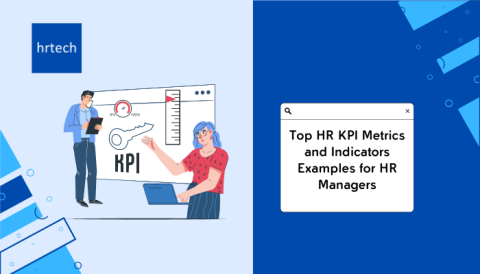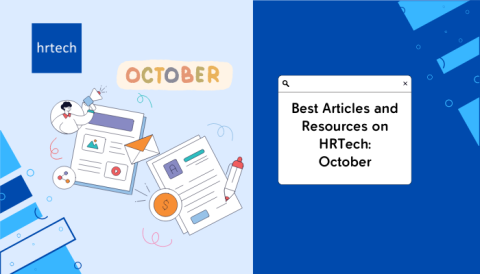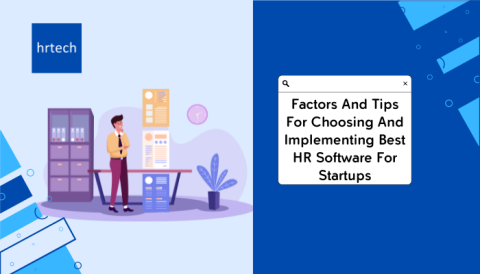Finding the right employee can be challenging. But with a well-planned selection process, you can ensure that you’re hiring the best talents for your organization.
In this guide, we provide a step-by-step roadmap for the entire employee selection process, along with many tips, examples, and actionable insights. Let’s dive in.
1. Role Planning
Role planning is the first and most important step in the hiring process. It involves really thinking about what you need in a new team member.
Start by asking yourself some key questions:
- What tasks and responsibilities will this person have?
- What skills and experience are necessary to do the job well?
- How will this role fit into the larger team and company structure?
- What kind of personality and work style will thrive in this position?
Taking the time to clearly define the role upfront can save you a lot of headaches later on. It helps you create a targeted job description, screen resumes more efficiently, and ask the right questions in interviews.
Tips for effective role planning:
- Involve key decision makers. Get input from the hiring manager, team members, and anyone else who will work closely with the new hire.
- Consider future needs. Think about how the role may evolve over time and what skills will be important down the road.
- Be specific. The more detailed you can be about the responsibilities and requirements, the better.
- Prioritize. Identify which skills and traits are must-haves versus nice-to-haves.
Example:
Let’s say you’re hiring a new customer support representative. Some key things to consider in the role planning stage might be:
- Specific channels they’ll be responsible for (phone, email, chat)
- Experience with your product or service
- Familiarity with certain support tools and platforms
- Ability to handle difficult customer conversations with empathy and patience
- Strong problem-solving and communication skills
By taking the time to think through these details upfront, you’ll be well-prepared to find the right fit for the role and your team.
2. Job Description Preparation
The job description is your chance to get potential candidates interested in the role. It should give a clear, engaging overview of the position and what it’s like to work at your company.
A great job description includes:
- A clear job title
- An overview of your company and mission
- Key responsibilities and day-to-day tasks
- Required and preferred skills and qualifications
- Salary range and benefits (if you choose to share them)
- A glimpse into your company culture and values
When writing the job description, put yourself in the candidate’s position. What would get you excited about this opportunity? Use normal conversational language and avoid jargon or terms they may not know.
Tips for an effective job description:
- Keep it easy to read. Use short paragraphs, points, and headings to break up the text.
- Highlight what’s in it for them. Showcase growth opportunities, unique perks, and the impact they can have in the role.
- Strike the right tone. Use language that reflects your brand personality, whether that’s more formal or casual.

3. Selection Committee Formation
Forming a selection committee is a key step in the hiring process.
It involves bringing together a group of people who will be responsible for evaluating candidates and making hiring decisions.
Why is it important?
A well-chosen selection committee brings diverse perspectives and expertise to the hiring process. This helps ensure that candidates are evaluated fairly and objectively, and that the best person for the job is ultimately selected.
Here are some tips for forming an effective selection committee:
- Include people from different departments and levels within the organization.
- Look for individuals with relevant expertise and experience.
- Keep the committee size manageable (3-5 people)
Once you have your committee in place, make sure to clearly define their roles and responsibilities. Provide training on topics like unconscious bias and interview techniques to ensure a fair and effective selection process.
Looking for a flexible way to expand your hiring capacity? hrtech’s Talent On-Demand service provides access to a pool of experienced HR professionals who can support your selection process on an as-needed basis, from screening resumes to conducting interviews.
4. Candidate Application
The candidate application is the first chance for job seekers to show off their skills and experience. It’s important to create an easy-to-understand, user-friendly application process, and collects all the necessary information.
Key parts of a strong candidate application collecting portal include:
- A clear job description that outlines duties and requirements
- An easy-to-use online application system
- Fields for contact information, work history, education, and references
- Space for candidates to highlight relevant skills and achievements
- An option to upload a resume and cover letter
To get the most out of candidate applications, think about using an applicant tracking system (ATS) like Greenhouse, JazzHR, or BambooHR. This software can help you efficiently manage and screen applications based on key criteria.
5. Resume Screening

Resume screening is the process of reviewing candidate resumes and applications to identify those who meet the basic qualifications for the job.
It’s a crucial step in narrowing down the applicant pool and moving the best candidates forward.
Why is resume screening important?
Focusing on the most promising candidates early in the hiring process saves time and resources. Effective resume screening can also help reduce bias and ensure that all applicants are evaluated fairly.
Tips for successful resume screening:
- Create a checklist of must-have qualifications and nice-to-have skills.
- Use ATS software to automatically screen resumes for keywords and criteria.
- Have at least two people review each resume to reduce bias.
- Look for red flags like frequent job changes or large gaps in employment.
- Don’t overlook transferable skills and non-traditional backgrounds.
Did you know? On average, recruiters spend only 7.4 seconds looking through each resume.
To make the most of this short time, focus on key sections like:
- Work experience
- Education and certifications
- Skills and achievements
- Relevant keywords
By following a structured resume screening process and using ATS tools, you can efficiently identify the top candidates and move forward with them to the next stage of the selection process.
6. Assessment
Assessments are tools used to evaluate candidates’ skills, knowledge, and abilities. They can take many forms, such as personality tests, cognitive ability tests, work samples, or case studies.
The purpose of assessments is to gather objective data about each candidate’s potential to succeed in the role. This information can help you make more informed hiring decisions and reduce the risk of bias.
Here are some best practices for using assessments in the hiring process:
- Choose assessments that are relevant to the job and have been validated for use in hiring.
- Use a combination of different assessment types to get a well-rounded view of each candidate.
- Ensure that all candidates take the same assessments under similar conditions.
- Use assessment results as one factor in the hiring decision, not the sole determinant.
Example:
Let’s say you’re hiring for a sales position. To evaluate sales techniques, you might use a combination of a personality test, a cognitive ability test (to measure problem-solving skills), and a role-playing exercise.
When used effectively, assessments can provide valuable insights into each candidate’s strengths and areas for development. This information can help you make more informed and data-driven hiring decisions.
Finding the right assessment tools for your hiring processes can be overwhelming – but not anymore. Explore hrtech’s marketplace to find a handpicked collection of the best talent assessment softwares and other HR softwares to optimize your hiring processes.
7. Interview Rounds
Interview rounds are a series of interviews conducted with candidates who have passed the initial screening stages.
The purpose of interview rounds is to gain a deeper understanding of each candidate’s qualifications, experience, and fit for the role.
Typically, interview rounds progress from more general to more specific and in-depth.
Here’s an example of what this might look like:
- Round 1: Phone screen with a recruiter to verify basic qualifications and interest in the role.
- Round 2: Video interview with the hiring manager to discuss the candidate’s background and experience in more detail.
- Round 3: Panel interview with team members to evaluate technical skills and team fit.
- Round 4: Final interview with a senior leader to discuss long-term career goals and alignment with company values.
Tips for conducting effective interview rounds:
- Prepare a consistent set of questions for each round, tailored to the specific focus of that stage.
- Train all interviewers on best practices and legal guidelines for interviewing.
- Take detailed notes during each interview to capture key points and observations.
- Communicate with your team members after each round to share feedback and make decisions about moving candidates forward.
Here’s an example of how you can structure a 3 round interview stage:

8. Background And Reference Check
Background and reference checks are an important step in verifying a candidate’s qualifications and ensuring they are a good fit for your company. These checks typically involve:
- Verifying employment history and job titles
- Confirming educational degrees and certifications
- Checking references provided by the candidate
The purpose of background and reference checks is to validate the information provided by the candidate and to gather additional insights into their work performance and character.
Tips for conducting effective background and reference checks:
- Obtain written consent from the candidate before conducting any checks.
- Use a reputable background check provider to ensure compliance with legal requirements.
- Verify the identity of each reference and their relationship to the candidate.
- Ask references specific questions about the candidate’s job performance, strengths, and areas for development.
It’s important to have a consistent process for background and reference checks and to apply it fairly to all candidates. This helps ensure compliance with legal requirements and reduces the risk of bias.
Check out the top compliance management software that can help you maintain compliance and follow all the necessary regulations.
When conducting reference checks, consider asking questions like:
- How long did you work with the candidate, and in what capacity?
- What were their primary job responsibilities and performance level?
- How would you describe their strengths and areas for improvement?
- Would you rehire this person? Why or why not?
Background and reference checks can provide valuable information to help you make the best hiring decision.
9. Final Decision
The final decision is the end of all the previous steps in the selection process. At this stage, you have gathered a lot of information about each candidate through applications, assessments, interviews, and background checks. Now it’s time to bring all that information together and make a hiring decision.
Here are some key considerations:
Once you have made a decision, it’s important to communicate with all candidates in a timely and professional manner. For the selected candidate, extend a verbal offer and move forward with them to the next stage of handing the job offer letter. For candidates who were not selected, provide a respectful notification. Offer to provide feedback if requested, and keep their information on file for future opportunities if they were a strong candidate.
10. Job Offer
The job offer is the exciting final step of the selection process. It’s the moment when you formally invite your chosen candidate to join your team.
A well-crafted job offer should include:
- Job title and description
- Start date
- Salary, bonuses, and any equity or stock options
- Benefits like health insurance, retirement plans, and vacation time
Pro-Tip: It’s important to make the offer in writing, even if you extend a verbal offer first. This helps ensure clarity and avoid misunderstandings.
When extending the offer, consider these tips:
- Make it personal. Call the candidate to share your excitement and follow up with a written offer.
- Be clear and specific. Outline all the key terms and conditions of employment.
- Allow time for consideration. Give the candidate a reasonable deadline to accept or decline, usually 1-2 weeks.
Remember, the job offer is not just a formality. It’s a chance to highlight your company’s values and culture and to set expectations for the new hire.
Some of the top softwares that can help you effectively in offer management are:
- BambooHR (Best For Small Businesses)
- Gusto (Best For Growing Startups)
- Workday (Best For Large Enterprises)
- Paycor (Best For Global Companies)
11. Onboarding
Onboarding is the process of integrating a new hire into your organization. It’s a critical step that can make or break the employee’s long-term success and engagement.
A strong onboarding process should:
- Welcome the new hire and make them feel valued
- Provide a clear plan of their first days and weeks
- Introduce them to key people and resources
- Set expectations for job performance and company culture
- Offer training and support to help them get up to speed quickly
Onboarding starts before the new hire’s first day. Consider sending a welcome packet with information about the company, the team, and what to expect on day one.
On the first day, make sure to:
- Give a warm welcome and introduction to the team
- Provide necessary equipment and access (computer, badge, etc.)
- Review key policies and procedures
- Set up meetings with key co-workers and leaders
The onboarding process should continue beyond the first week. Some companies have a 30-60-90 day plan that outlines goals and milestones for the new hire’s first three months.
Onboarding Milestones:
- Day 1: Welcome and orientation
- Week 1: Training and introductions
- Month 1: Goal-setting and feedback
- Month 2: Project assignments and check-ins
- Month 3: Performance review and future planning
Throughout the onboarding process, make sure to offer regular check-ins, feedback, and support. Assign a mentor or buddy to help the new hire mix up in the organization comfortably and answer their questions.
Frequently Asked Questions:
What Is The Selection Process?
The selection process is the step-by-step method used to find, assess, and hire the right candidate for an open position. A well-planned selection process helps in making informed hiring decisions.
What Are The Stages Of The Selection Process?
The stages of the selection process can vary, but a typical flow includes the following key stages:
- Identifying the hiring need and planning the role
- Attracting candidates through job postings and sourcing
- Screening resumes and applications
- Giving job-related tests or assessments
- Inviting top candidates for interview rounds
- Checking references and conducting background checks
- Selecting the best candidate and making a job offer
- Onboarding and welcoming the new hire
Which Tools Should You Use For The Employee Selection Process?
Some popular tools used in the employee selection process include applicant tracking systems (ATS) like BambooHR or Greenhouse to manage resumes and applications, video conferencing software like Zoom or Skype for remote interviews, and pre-employment assessment platforms like iMocha. Background check services like AssureHire or Checkr can also simplify the verification process.
What Are The Best Practices In The Selection Process For Hiring?
Some best practices to follow in the selection process include starting with a clear understanding of the role and its requirements, using multiple methods to assess candidates, involving multiple key decision makers in the process, moving quickly to avoid losing top candidates, and providing a positive candidate experience throughout.
Conclusion
Hiring the right people is key to building a strong team. In this guide, we covered the 11 crucial steps in the selection process for hiring employees.
Overall, the main things to keep in mind include getting inputs from key decision makers, using different techniques to assess candidate’s skills, and providing a great candidate experience throughout the whole selection process.
With a solid plan and proper tool set, you can easily find the perfect employees for your company.
Need more help improving your hiring processes? At hrtech, we provide expert guidance, a vast software marketplace, and talent on-demand solutions to help you build the ideal team you need to succeed. Learn more now!





